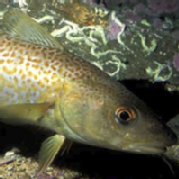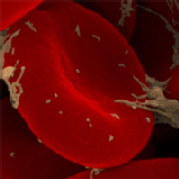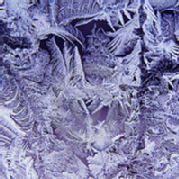Biophysical Chemistry Project
Cryopreservation of Red Blood Cells in Presence of Recrystalisation Inhibitors.
Dr Matthew Gibson, Chemistry.
Materials Chemistry - Matthew Gibson Group
Project Background:
There is real need for increasingly efficient means of storing and preserving biological samples, particularly primary human cells, tissue and organs. For example, blood storage is often limited to 4 days until the cells are no longer viable. Consequently, demand often exceeds supply. Cryopreservation can help but significant cellular damage still occurs during the thawing process
due to ice recrystallization – the formation of large crystals which can pierce membranes, killing the cells. Current technologies rely on adding cryoprotectants, such as DMSO, which are also cytotoxic often rending cells/tissue non viable. Much attention has been paid to naturally occurring antifreezes, particularly the antifreeze glycoproteins (AFGPs) found in polar fish species. These proteins allow the fish to survive in sub-zero water, but are only present in small quantities, making extraction of sufficient amounts for any biotechnological purpose extremely difficult. Furthermore, the synthesis of AFGPS is complex and economically unviable. This paucity of material also means that their exact mechanism of action is still unknown. Several studies have demonstrated that AFGPs may not be suitable for cryopreservation as following storage at very low temperatures (less than -20 oC) these proteins can cause increased cellular damage, rather than reducing it when they are applied in higher concentraitons. This is attributable to their influence on ice crystal morphology which leads to long spicular (needle-like) crystals which can pierce cells.
Recently it has been demonstrated that some relatively simple polymers can inhibit ice recrystalisation – the formation of larger ice crystals during thawing following cryopreservation, which has been indicated as the key cause of damage in cryopreservation. Importantly the polymers do not show the damaging ice-shape modifications, which make them ideal candidates for cryopreservation. Furthermore, the properties of the polymers can be fine-tuned by changing the chemical composition, molecular weight and molecular architecture. Synthetic polymers are also less likely to elicit an immune response than native AFGP, which contains a carbohydrate antigen. It should be noted that this is a distinctly different approach than vitrification (cryostorage when significant amounts of water are replaced with another solvent to prevent the formation of ice crystals), where polymers which inhibit ice nucleation are added, which is an entirely different process. In this project, the interaction of ice recrystalisation inhibitors with red blood cells during and after cryo-storage will be investigated. The aim will be to measure the improvement in cell viability following cryo-storage and thawing, upon addition of the polymer to the preservation mixture.
Further Reading:
Carpenter, J.F. & Hansen, T.N. (1992). Antifreeze protein modulates cell survival during cryopreservation: Mediation through influence on ice crystal growth. Proc. Natl. Acad. Sci. 89, 8953-8957.
Gibson, M.I., Barker, C.A., Spain, S.G., Albertin, L. & Cameron, N.R. (2009). Inhibition of Ice Crystal Growth by Synthetic Glycopolymers: Implications for the Rational Design of Antifreeze Glycoprotein Mimics. Biomacromolecules. 10, 328-333.
Tomczak, M.M., Marshall, C.B., Gilbert, J.A. & Davies, P.L. (2003). A facile method for determining ice recrystallisation inhibition by antifreeze proteins. Biochem. Biophys. Res. Commun. 311, 1041-1046.
(*Project Background adapted from the original MOAC mini-project proposal)




